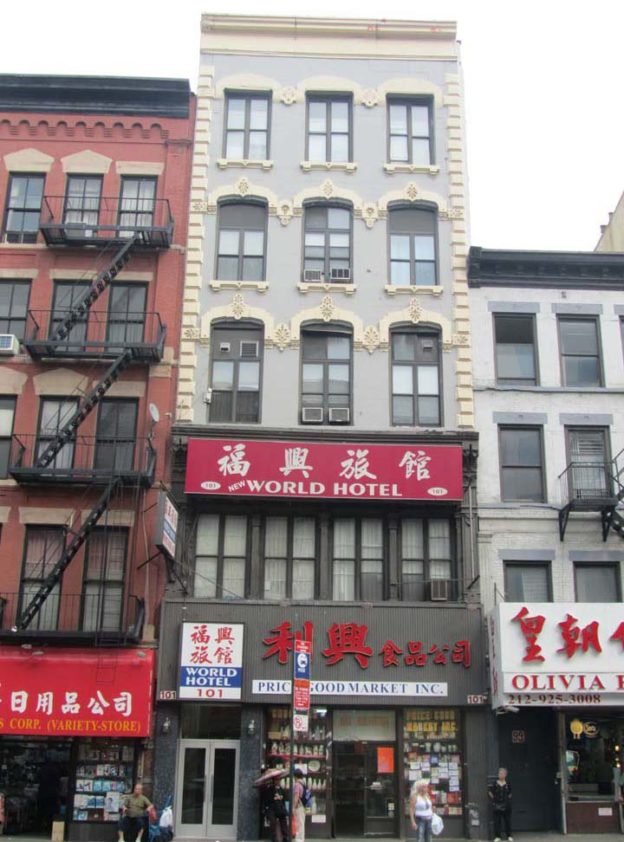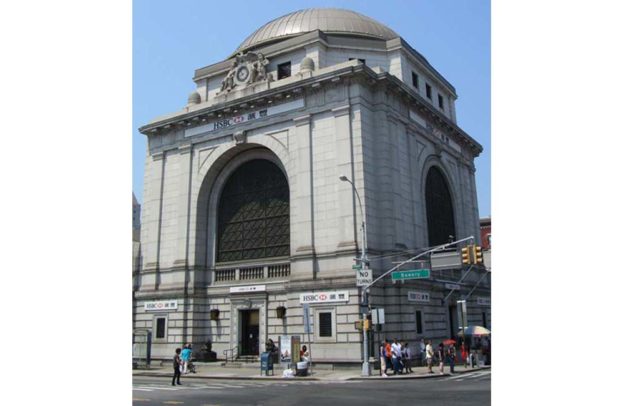101 BOWERY;
William Jose;
1875|
This six-story commercial building once was home to “Mr. Worth’s Renowned Museum of Living Curiosities,” a testament to the Bowery’s vaudeville past. This Neo-Grec structure has intact architectural details like stone quoins, incised stone lintels, sills and window surrounds.
54–58 Bowery;
Clarence W. Brazer;
1924|
This grand bank dominates the corner of Canal and Bowery, and references the Manhattan Bridge’s access across the street in design and materials. This Beaux-Arts beauty features a bronze dome, carved stone ornamentation, arches, pilasters, scrolls, keystones, a classical entablature and a balustrade. The Bowery façade possesses a clock that is flanked by Native American and seamen figures and is topped with an eagle. The building still serves as a bank today. It was designated a city landmark in 2011.
Unknown architect;
1807|
These two Federal-style houses have stood on the Bowery for over 200 years. No. 40 was the headquarters for the Bowery Boys—a nativist gang— in the mid-19th century. The infamous July 4th,1857, riot between the Irish gang of the Dead Rabbits and the Bowery Boys began in the saloon in No. 40 and lasted three days. These buildings retain original features such as Flemish-bond masonry, steeply pitched roofs with single peaked dormers on the front and back, gable-end chimneys and some stone lintels and sills that still remain.




